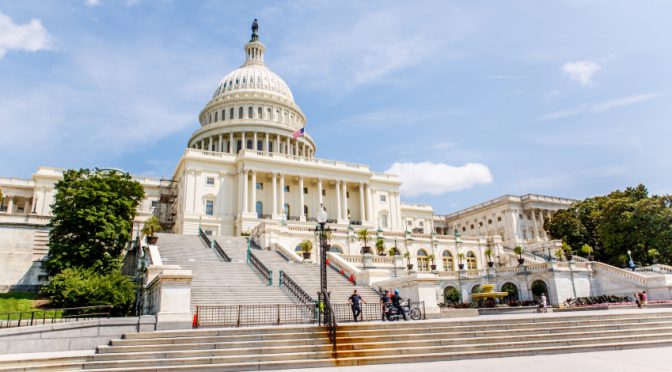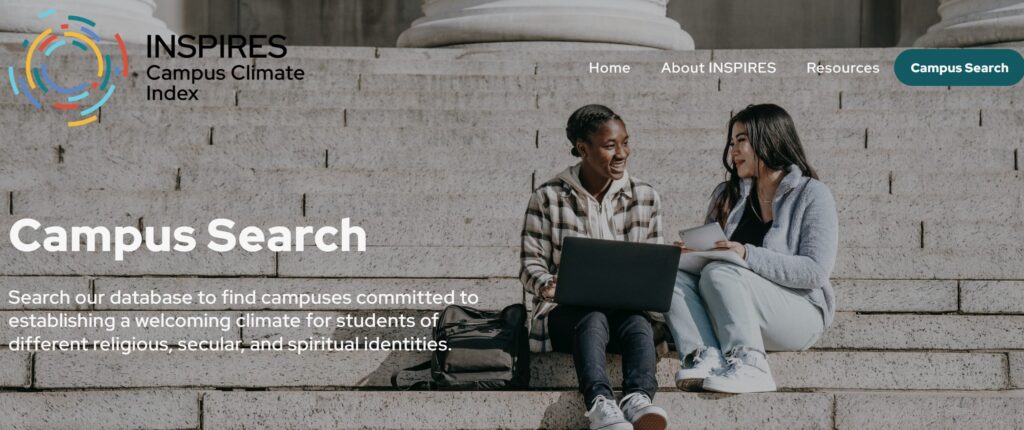By Sean Robins, NACAC’s director of advocacy
Welcome to the first edition of our Policy & Legislative Update series. These regular posts are meant to keep NACAC members informed about key policy developments, NACAC’s advocacy priorities, and opportunities to take action in support of students and the college admission counseling profession.
My name is Sean Robins, and I serve as NACAC’s director of advocacy. With experience across education policy, program leadership, and nonprofit strategy, I am honored to bring these updates to our members at such a critical moment for college access and admission. I will regularly share highlights from Capitol Hill, federal agencies, and the broader policy landscape — always with an eye toward what it means for your work and our shared mission.
This inaugural update comes amid growing national attention to race-conscious practices, new federal directives on admission data reporting, and ongoing debates over higher education funding.
Policy & Legislative Updates
The Trump administration has issued a Presidential Memorandum directing the Department of Education to overhaul the IPEDS system beginning in the 2025–2026 academic year. Historically, IPEDS has only captured the racial composition of enrolled students — not applicants or those admitted. Under this new directive, institutions will be required to disaggregate data by race and sex at three stages of the admission process: applicants, admitted students, and enrolled students. The new requirements will apply at the undergraduate level and in select graduate and professional programs.
While efforts to improve transparency in admission data can offer value to students and families, we are viewing this directive in the broader context of ongoing scrutiny around race-conscious policies. NACAC remains committed to defending holistic review and the importance of personal lived experience in admission.
With Congress in its August recess, key developments in federal education policy continue to unfold with major implications for funding, access, and institutional accountability. The Senate Appropriations Committee passed a bipartisan FY 2026 Labor-HHS-Education bill (26-3) just before the recess, rejecting the Trump administration’s proposed $12.4 billion cut and maintaining most core education programs at current levels. The bill preserves funding for TRIO, GEAR UP, Pell Grants ($7,395 max), FSEOG, Federal Work Study, CCAMPIS, and Title IV-A. It also ensures timely disbursement of K-12, CTE, and adult education grants and blocks efforts to shift Title I and IDEA programs out of the Education Department. The House will take up its version after the recess.
The Common App opened the 2025-2026 application season with new equity-driven features, including a required question on student responsibilities outside school, expanded direct admission, and improved scholarship notifications for first-generation and low-income students.
Access challenges remain front and center. A new NCAN analysis reveals that nearly half of students who did not file the FAFSA believe they are ineligible — including many receiving public assistance or who lack access to $500 in an emergency. Despite system fixes, misperceptions about eligibility remain a major barrier.
Rural students continue to face persistent obstacles to enrollment, even with dual enrollment options for targeted outreach. Factors like cost, geographic isolation, and skepticism about higher education’s value shape decision-making. Still, local partnerships and district investments are helping to move the needle in some communities.
Alabama has launched a statewide direct admissions initiative, automatically admitting students to nearly 40 institutions — including HBCUs — based solely on transcript data. The goal is to expand access, eliminate application barriers, and support the state’s workforce and economic development priorities. Separately, institutions participating in the Great Admissions Redesign are piloting structural innovations to streamline admission, integrate advising and financial aid, and improve student engagement.
Federal scrutiny of higher education institutions continues to intensify. Columbia and Brown have reached agreements with the Trump administration following grant freezes tied to allegations of antisemitism. While funding has not yet been restored, both institutions expect payments to resume within 30 days. Over $6 billion in research funding remains frozen across several institutions, including Harvard and Princeton. At the same time, UCLA has become the first major public university to face similar sanctions, with hundreds of millions in grants suspended amid DOJ allegations.
Continued visa delays also pose significant threats to international student enrollment this fall, with projections showing a potential 15 percent drop — or 150,000 fewer students — and a $7 billion economic loss.
At the same time, a new Gallup and Lumina Foundation survey finds that most parents still view postsecondary education as essential for their children’s success. Three in four parents — across political affiliations — say they want their kids to pursue education after high school, with four-year colleges remaining the top preference. However, interest in shorter-term, career-aligned alternatives like two-year colleges, job training, and certificate programs is growing. While skepticism around cost and outcomes persists, the belief in education as a path to upward mobility remains strong.
Recent Government Accountability Office (GAO) rulings reaffirm that the executive branch cannot delay or cancel congressionally approved education and research funds. These findings reject tactics like “pocket rescissions” and uphold Congress’s power of the purse. These decisions signal stronger safeguards against the misuse of federal authority to defund institutions or programs — particularly those tied to research, student aid, or equity initiatives. However, with litigation still pending and administrative workarounds under scrutiny, continued vigilance and advocacy remain critical.
NACAC Advocacy
This week, NACAC continued to advocate for policies that support access, equity, and opportunity for all students — both in response to urgent federal developments and as part of our ongoing commitment to fair and inclusive education.
In the wake of a new memorandum from the Department of Justice declaring that many diversity, equity, and inclusion (DEI) practices may violate federal law, NACAC issued a firm statement reaffirming its commitment to expanding opportunity for all students. While the DOJ memo lacks the force of law, it has created confusion and concern across the field. NACAC is urging institutions not to overcorrect in ways that could limit equitable outcomes and is working with partners to monitor developments and provide guidance to members.
This week, NACAC applauded the Senate Appropriations Committee’s bipartisan passage of the FY 2026 Labor-HHS-Education bill. The legislation protects critical investments in TRIO, GEAR UP, Federal Work Study, FSEOG, CCAMPIS, and Basic Needs for Postsecondary Students, and maintains the Pell Grant maximum at $7,395. These wins reflect sustained advocacy by NACAC, our members, and coalition partners.
Ways You Can Take Action
We are continuously updating our Take Action page with opportunities to make your voice — and the voices of our members — heard. If you have not already, I encourage you to advocate on the urgent issues below. You can also view all active advocacy campaigns in the yellow column of the Take Action page.
- Tell Congress: Prioritize Visa Appointments for International Students and Scholars
- Urge Congress to Protect Postsecondary Pathways
- Tell Congress: International Students are Essential to America’s Safety, Economy, and Global Strength
- Tell Congress: Do not abandon our national commitment to education
- Urge Congress to protect disabled students
- Don’t Flunk the Future Advocacy Toolkit
Amid ongoing challenges and shifting political winds, our commitment to advancing equitable access and opportunity remains unwavering. We understand that progress often unfolds behind the scenes — quiet but persistent — and that patience and perseverance are essential.
Though the path ahead may be clouded, we hold fast to the truth that brighter days are coming. As Khalil Gibran wisely said, “No matter how long the storm lasts, the sun always shines behind the clouds.”
This hope fuels our work and reminds us that every effort we make today brings us closer to our vision — that the transformative power of postsecondary education is accessible to all.







 It is getting closer to the fall semester and your application numbers are below last year’s count.
It is getting closer to the fall semester and your application numbers are below last year’s count.

